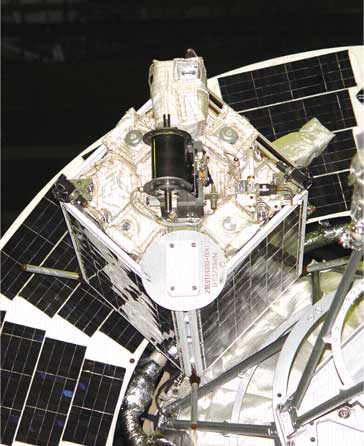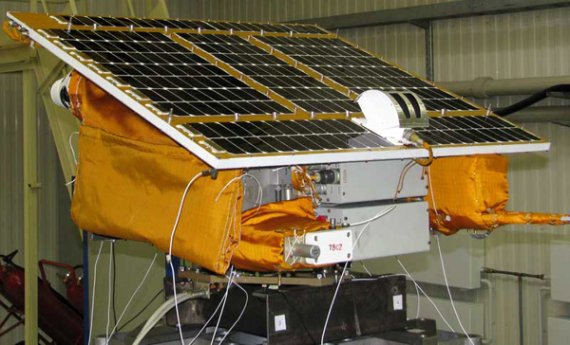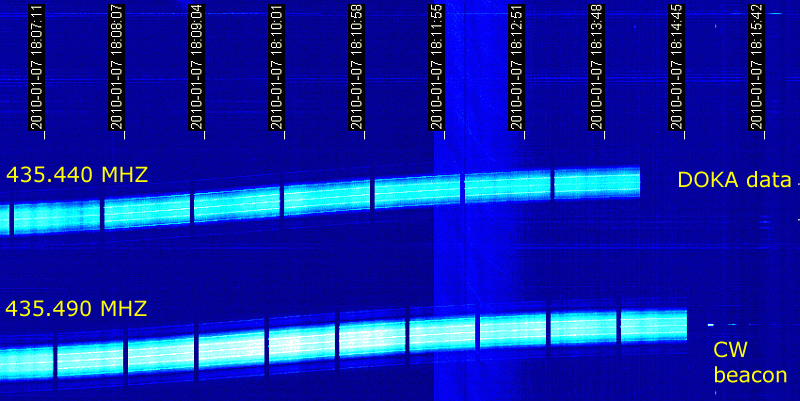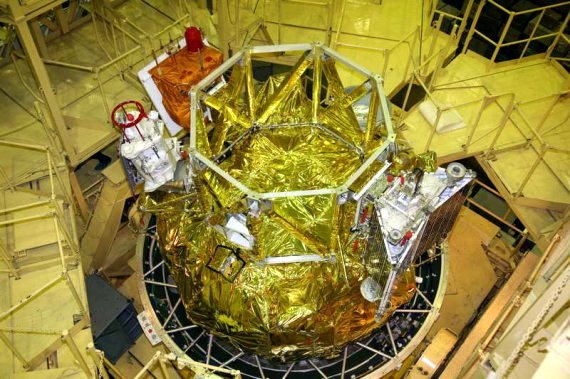
Launch: 17.09.2009 Baikonour (Soyuz-2.1b)
Tatiana – a supersmall satellite is manufactured by Production Corporation “Polyot” (Omsk, Russia) in the interests of Lomonosov Moscow State University. Tatiana-2 scientific-research sputnik is the Moscow State University’s project named after the holy protector of the University and Russian students. It was realized under auspices of the Federal Space Agency in frames of the top-priority national project Obrazovaniye (Russian for education – IF). Its aim is to carry out joint scientific-research and experimental construction works, press service of the Russian Rectors’ Union has told Interfax-Religion on Tuesday.
Tatiana 2 is to study a new phenomenon in the level of dozens of kilometers, energetic flashes of light in ultraviolet diapason, the nature of which is not clear yet. Staff members of the University’s Mechanics and Mathematics Faculty greatly contributed in Tatiana 2 development. Thanks to their efforts, the sputnik is equipped with new on-board navigation system that does not have any analogues.
NASA Catalog: 35869
Downlink
435.490 und 435.442 MHz CW und FM ( Data)
Orbital Parameter
NORAD 35869 COSPAR Bezeichnung 2009-049-E Inklination (Grad) 98.783 RAAN 60.987 Excentrizität 0.0005461 ARGP 110.438 Umläufe pro Tag 14.21975435 Periode 1h 41m 16s (101.27 Min) Semi-major axis 7197 km Perigäum x Apogäum 815 x 823 km Bstar (drag Faktor) 0.000100000 1/ER Mean Anomaly 249.735
SatPC32 Doppler.sqf Settings
TATIANA-2,435490,0,CW,CW,NOR TATIANA-2,435490,0,FM,FM,NOR TATIANA-2,435442,0,CW,CW,NOR TATIANA-2,435442,0,FM,FM,NOR
Status
Mitte Januar 2010 fiel der IR-Vertikal Sensor aus, der zur Lageregelung benutzt wird. Daher funktioniert das ADCS nicht richtig und der Satellit taumelt bzw. richtet sich nicht zur Erde aus. Damit verbunden liefern die Solarpaneele nicht genügend Strom und die Kommunikation mit der Bodenstation wird erschwert. Zudem besteht die Gefahr, dass der Satellit einfriert. Die wissenschaftlichen Experimente wurden abgeschaltet.


Payload
The payload of the Universitetskiy satellite includes groups of detectors of charged particle flux measurements (BD1-BD4 and BA); UV-emission detectors: 300-400 nm wavelength (DUV); information units that record and transmit scientific information from the detecting units to the auxiliary units, which in turn transmit it to the ground-based receiving stations.
Detectors on the Tatiana-2 satellite measured a smoothly varying intensity of UV radiation from the night-time atmosphere in the nadir direction and the intensity of the energetic electron flux at the orbit. At high latitudes the UV intensity in the auroral oval is interpreted as being due to electrons penetrating into the atmosphere. At middle latitudes the UV intensity is an order of magnitude less and more data are needed to reveal the origin of this radiation. Millisecond flashes of UV radiation were observed. The flashes’ energy, temporal profile and global distribution are similar to these parameters for Transient Luminous Events (TLEs).

The new detectors on board of Tatiana-2 are:
– MEMS telescope and spectrometer.
– Electron flux detector of area 400 cm²
In the Tatiana-2 experiment the data on transient events will be improved in the following directions:
- image observation in UV range (wavelengths 300-400 nm) with high resolution in space and time
- simultaneous measurement of radiation spectrum in wide range of wavelengths 300-600 nm
- simultaneous measurement of the electron flux at the satellite orbit by large area detector capable to measure a low electron density flux in sub-millisecond time samples
- larger energy range of the detected events and much larger statistics due to improved data transmitting system


CW Telemetry
rs38 ubs196 uab183 ibs18 iab109 isp0 tab160 tsep146 tuf0 tbi175 tspa172 tspb255
mcon69 sma112 smb109 mra11 mrb14
rs38 ubs194 uab181 ibs18 iab109 isp0 tab160 tsep146 tuf0 tbi175 tspa163 tspb255
mcon69 sma122 smb115 mra11 mrb14
rs38 ubs193 uab180 ibs19 iab109 isp0 tab160 tsep146 tuf0 tbi175 tspa156 tspb255
mcon69 sma120 smb118 mra11 mrb14
05.01.2010, 10:14 UTC
FM Telemetry

07.01.2010, 18:06 UTC – strong signals on two frequencies – f1= 435.442 MHz and f2 = 435.490 MHz
Links und weitere Informationen

Garipov G.K., Khrenov B.A., Panasyuk M.I., Rubinshtein I.A., Tulupov V.I., Salazar H., Shirokov A.V., Yashin I.V., UV radiation detector of the MSU research educational micro satellite Universitetsky-Tatyana. Instruments and Experimental Techniques, 49 (2006) 126-131.
Sadovnichy V.A. et al, Cosmic Research, First results of investigating the space environment onboard the Universitetsky-Tatiana satellite. Cosmic Research, 45, 273-286, 2007.

Das gesamte Cluster auf der Soyuz-2.1b: Meteor-M, ZA-002 SumbandilaSat, Sterkh, Tatiana 2, BLITS, UGATUSAT und der Block IRIS.
 … complete CW record (4 min)
… complete CW record (4 min)